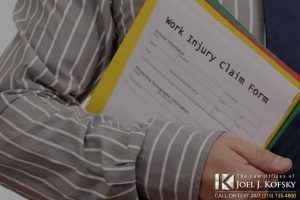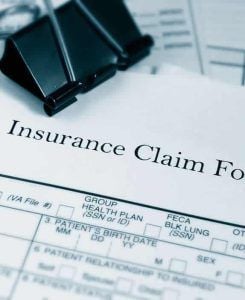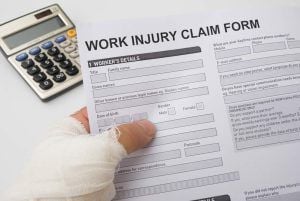Construction has become much safer in recent decades
This is due to a number of factors, including technology, safety regulations, and better and more complete training. Even with all of that, there is still a high potential for injury. Construction is just inherently dangerous in even the best of scenarios. More than one-fifth of all fatalities that happen on the job happen in the construction industry.
Types Of Construction Accidents
There are an incredibly wide array of ways to be hurt, injured, and even killed while on duty at a construction site. It can be crucial to safety to know how the majority of accidents do end up happening, so that you are aware of the risks, how to mitigate them, and what to do if you are involved in an accident at work.
Hoist & Crane Accidents
Many construction sites use enormous cranes, hoists, and other lifting machinery to raise materials and equipment up and swing them into place. In many cases of injury from cranes and hoists, the accident happened due to lack of training leading to operator error.
Falls From Heights
A large number of construction projects take place in metropolitan areas, many floors above street level. Even projects that aren’t conducted on skyscrapers often use ladders and scaffolding. The smallest residential roofing project can have lifelong tragic consequences if the proper measures aren’t taken and an employee falls from a height.
Slips And Trips
Accidents involving slipping or tripping are extremely common. They are the second most common type of accident in the US, only coming in behind car accidents. They can result in injuries as common and relatively painless as bruises, or as permanent and painful as hip or back injury, or even broken or lost teeth.
Repetitive Stress Injuries
Contrary to popular misconceptions, office workers aren’t the only ones who can get repetitive stress injuries. Whether the injuries are to the wrists, the back, the ankles, elbows, or knees if proper precautions aren’t taken, the injuries can worsen and in some cases result in permanent damage. While they cannot be prevented entirely, if the job is not varied, they can be reduced to a large degree.
Fire & Explosion
Construction sites will often utilize not only large amounts of diesel fuel, but explosives, and other potentially dangerous substances. Without the proper safety, accidents can result in severe burns, out-of-control fires, and in some cases even explosions. Many types of construction projects also occur in confined spaces where gas or vehicle exhaust can collect and pose an asphyxiation risk.
Forklift Accidents
Forklifts and other small load-moving machines can be deadly and destructive in the wrong hands. Operators need to be specially trained, attentive, and properly protected, in order to protect themselves as well as others. Forklifts can cause crushing, impaling, and other serious or fatal injuries.
Heavy Machinery Accidents
Many construction sites need large pieces of heavy machinery such as excavators and bulldozers. While large machines make the project easier and quicker, they can cause incredibly severe accidents if the operators are not attentive and competently trained.
Trench Collapse Accidents
During the course of many projects, large trenches are dug to facilitate various construction needs. These trenches can collapse if not constructed exactly to specification, injuring workers, crushing them, or otherwise trapping them, preventing them from extricating themselves. For those involved, even without sustaining an injury, these can be extremely traumatic accidents.
Elevator Shaft Accidents
In situations where there are open elevator shafts, for example in new buildings, there is always the risk of falling down the shaft if precautions are not put in place. These will produce similar injuries to falling from heights, though the environment of the elevator shaft can exacerbate things.
Electrocutions
With construction sites using large generators for power tools and supplemental lighting or heat, there are many ways to be injured via electrocution at a job site. Not only can the equipment itself cause electrical injury if damaged or improperly maintained, but there may also be cables strung overhead or laid along the ground. At jobs on roofs or at heights in the open, workers can be at risk for lightning injury as well.
Caught-Betweens
A caught-between is when a worker’s digit, limb, or entire body gets caught between pieces of heavy equipment, material, or debris, and crushed or otherwise injured. These are accidents that can result in severe damage to the body part involved in the caught-between accident. In many cases, the injury is severe enough that the limb or body part cannot be saved and must be amputated.
Struck-Bys
Since motor vehicles, as well as specialty vehicles, are very common on the job site, accidents involving them can also be relatively common. Construction workers face a significant amount risk of being “struck by” a vehicle or other piece of mobile machinery while at work. This type of accident can result in anything from soft tissue injuries to broken bones, to death in the worst cases.
Exposure To Hazardous Substances
Exposure to hazardous or dangerous chemicals or substances is one of the most common ways for workers to suffer serious, long-term injuries. While many chemicals or toxins will cause immediate symptoms in those who have been exposed, there are some that do not. There are also some cases where the workers are not made aware of the risks when they begin work on a project.
Asbestos exposure is one of the most common and dangerous long-term injuries suffered by workers in the construction industry. It is present in an extremely wide variety of industries, products, and locations, making exposure difficult to track in many cases. The symptoms do not show up until between 10 and 50 years following contact, depending on the level and duration of exposure. It causes cancer and is always fatal.
What Does RIDDOR stand for?
When it comes to construction work in the U.K., workers have the protection of RIDDOR in place. Reporting of Injuries, Diseases, and Dangerous Occurrences Regulations (RIDDOR) is the law that requires those in charge of workplaces to keep records of and report any work-related accidents that lead to death or serious injuries.
RIDDOR Reportable Injuries
Because of RIDDOR, there are specific types of ailments that would need to be reported. These conditions include:
- 7-day Injuries: This is any injury that results in a worker being unable to perform their regular work tasks for 7 or more consecutive days.
- Major Injuries: Bone fractures (other than toes, thumbs, and fingers), amputations, blinding or reduction in sight, crushed torso or head with organ or brain damage, serious burns, scalping with hospital treatment, loss of consciousness due to asphyxia or head trauma, hypothermia or heat-induced illness after working in an enclosed space leading to resuscitation or hospital stay of 24+ hours.
- Injuries to The Public: Any injury to a member of the public that requires medical treatment at a hospital must be reported. This does not apply to those that go to get checked out as a precaution, but do not actually need treatment.
- Deaths: Any deaths that occur at work or as the result of an accident at work (within a year of the accident taking place).
Reportable Diseases That Can Occur On A Construction Site
Anytime a worker is diagnosed with certain occupational diseases that are likely to have been caused by their work, they must be reported per RIDDOR. These diseases include:
- Carpal Tunnel Syndrome after using vibrating or percussive tools.
- Hand or forearm cramping after prolonged repetitive use of arms, hands, or fingers.
- Occupational dermatitis after being exposed to known skin irritants or.
- Hand Arm Vibration Syndrome following percussive or vibrating materials or tools sensitizers
- Cancer diagnosis after occupational exposure.
- Occupational asthma due to respiratory sensitizer exposure.
- Tenosynovitis or tendonitis in the forearm or hand after frequent repetitive motions.
What Is Not Classed As A Dangerous Occurrence Under RIDDOR?
There are a few incidents that do not need to be reported:
- Accidents to those in the armed forces that are on duty
- Accidents that happen while being treated or examined by a dentist or doctor
- Accidents on a public road involving a moving vehicle (exceptions are: roadside work, loading or unloading, accidents involving trains)
What Happens When Someone Dies On A Construction Site
Thankfully it isn’t overly common, but it does happen. According to OSHA, it happens more than 300 times per year. While it is information that we hopefully never have to use, it is important to know how to handle a potentially fatal accident at work. Here are the steps to take if someone dies on the job.
Call 911
This is the first step, no matter what. You must inform the authorities and summon medical personnel.
Notify Emergency Contact
This is an important step, and it should be done in person. Not a text, email, or phone call. Deliver the news in person, and have a company representative ready to meet with the family, generally at the hospital.
Contact OSHA
If the worker’s death was work-related or occurred on the job, notify OSHA within 8 hours. They have a 24-hour hotline to report incidents. 1-800-321-OSHA.
Notify HR and Managers
Next, the HR department should be notified, as well as any other managers and employees that have a prioritized need to know.
Inform Other Employees
Following the managers and employees with a need to know, the general employee population can then be told. Let them know that details will follow, as they become available. Be sure they are familiar with all internal policies regarding media contact, in the event that they are approached.
Designate Family Contact Person
Be sure that you treat the family of the deceased with incredible sensitivity and tact during this time. Ask them who they would prefer to be their contact person, for dissemination of funeral arrangements, information regarding donations, and so on. Ask them how and when they would like to handle the employment finalities like benefits, life insurance, worker’s compensation benefits, and retirement account information.
Should I Seek Legal Help After A Construction Accident
Workers will always have the right to file a worker’s comp claim against their employers, but those agreements and settlements are not usually sufficient. Often, they make little to no allowance for the entirety of the medical bills and expenses, both current and future. They also frequently neglect the need for compensation for reduced earning capacity and lowered quality of life.
This is when the worker may want to contact an experienced construction accident attorney, to see if there are other entities that can be pursued for compensation and justice. Often there are several potentially liable parties.
Construction Accident Lawsuit
If you or someone you love has been injured while working at a construction site, you may be able to file a personal injury claim for the damages sustained as a result of those injuries. There are many ways that working with an experienced attorney can help benefit your claim.
They will help you determine and prove your damages and will help you seek monetary compensation for those damages from the parties liable. They can help you recover medical expenses that include not just the treatment for the immediate injury, but rehabilitation and therapy costs that could present in the future.
They can help you recover your lost wages from work and even overtime that was missed due to the injury. In some cases, they can even help recover a financial component for your emotional distress, pain, and suffering, because often the effects of a serious accident go deeper than just the physical injuries.
Additionally, an experienced construction accident lawyer will know how to build a strong case and how to present that case to the insurer at each stage of the process. You can focus on recovery and healing, while they handle the frustrating and stressful phone calls and paperwork. You won’t have to worry about the insurance company taking advantage of your claim because your attorney will be your advocate, as well as your professional negotiator.





